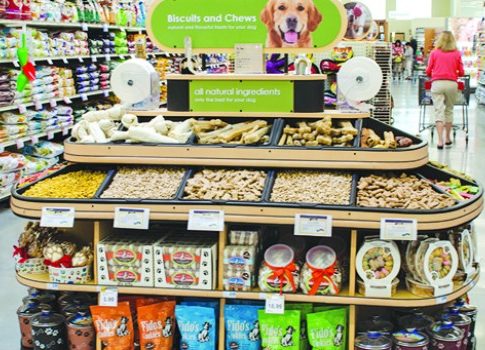U.S. retail sales of pet products reached an estimated $55 billion in 2019, up 5% over 2018, reports market research firm Packaged Facts in the newly published study U.S. Pet Market Focus: Mass Market Channel Shoppers.
Growth has derived from two relatively unsurprising sources—the Internet and pet specialty stores. Online purchases top the market and account for more than 20% of all pet product sales. Not far behind are chain pet specialty stores. These continue to be dominated by pet superstore operators PetSmart and Petco, although other chain pet stores (including Pet Supplies Plus, Pet Valu, Pet Supermarket, and Petsense) are increasingly a force.
Things get interesting when mass market stores are examined. The mass market channel includes mass merchandisers and supercenters such as Walmart and Target; food stores such as chain supermarkets and natural food supermarkets; and wholesale club stores including Costco and Sam’s Club. These stores are outperforming pet superstores in a market where specialty and premium pet products have the sales advantage.
“Today’s pet industry is benefitting from a variety of factors and trends, but most notably this is a market ripe with intriguing paradox and much of that paradox stems from the performance of mass market stores,” says David Sprinkle, research director for Packaged Facts.
Two key developments, both intertwined with e-commerce, help explain this development. First, mass retailers now feature very premiumized pet foods. The shift of pet food purchasing and sales growth to the Internet, which is no respecter of the mass-market vs. specialty divide, undercut the motivation of formerly specialty channel-only brands to maintain the exclusive pet specialty retailer relationships and brand-positioning cachet of being available only in pet specialty stores.
Secondly, while e-commerce has clearly grown the overall market and not merely cannibalized sales, there has nonetheless been an element of robbing Pet Stores to pay Paul. Survey data featured in U.S. Pet Market Focus: Mass Market Channel Shoppers show that, at the brick-and-mortar level, pet superstores have taken the most direct hit from e-commerce, based on the number and percentage of their customer base who also buy pet products online. The share of overall dog- or cat-owning households who shop for pet products both at PetSmart/Petco and online rose from 3.6% in 2015 to 13.5% as of 2019, thereby growing to account for a third (33%) of PetSmart/Petco customers. The ramifications are evident in channel shares trends, with chain pet specialty stores posting robust growth in 2017 and 2018, but dipping in share in 2019.





